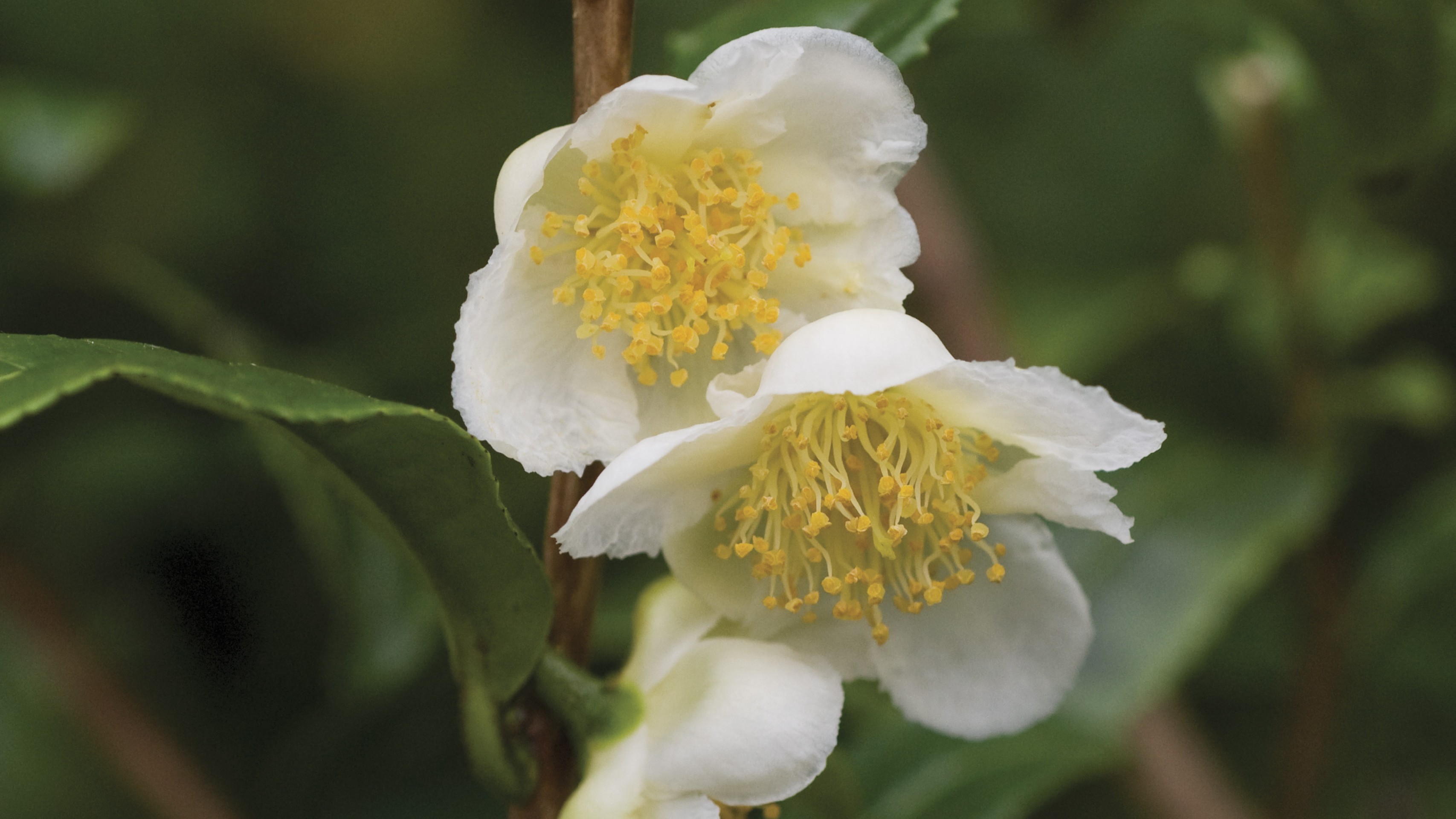By Skyler Ware
Copyright livescience

Skip to main content
Close main menu
Live Science
Sign up to our newsletter
View Profile
Search Live Science
Planet Earth
Archaeology
Physics & Math
Human Behavior
Science news
Life’s Little Mysteries
Science quizzes
Newsletters
Story archive
Skyscraper-sized asteroid flyby
Diagnostic dilemma
Elusive ‘grumpy’ cat photographed
Anthropologist Ella Al-Shamahi on human origins
How misinformation spreads
Don’t miss these
Scientists turned to a red onion to improve solar cells — and it could make solar power more sustainable
Scientists transform ‘forever chemicals’ in water into fluoride with new process
Engineering
Scientists invent photosynthetic ‘living’ material that sucks CO2 out of the atmosphere
Keratin extracted from sheep’s wool repairs teeth in breakthrough
Chinese scientists create multicolored glow-in-the-dark succulents that recharge in sunlight
Your household gadgets could soon be battery-free — scientists create tiny solar cells that can be powered by indoor light
Engineering
MIT’s high-tech ‘bubble wrap’ turns air into safe drinking water — even in Death Valley
Climate change
‘Serious adverse and unintended consequences’: Polar geoengineering isn’t the answer to climate change
Our gut bacteria can absorb and remove toxic ‘forever chemicals’ — at least in lab mice
A dangerous condition that can cause seizures, coma and death could rise dramatically as the climate warms
Scientists transform pee into material fit for medical implants
Fungus that may have caused ‘King Tut’s curse’ shows promise in treating cancer
Viruses, Infections & Disease
An infectious disease expert explains what germs can lurk in pools — and how to avoid them
Planet Earth
Tiny devices propelled by sunlight could explore a mysterious region of Earth’s atmosphere
‘Universal’ cancer vaccine heading to human trials could be useful for ‘all forms of cancer’
Scientists invent new sunscreen made from pollen
Skyler Ware
17 September 2025
Traditional chemical sunscreens can damage coral reefs. Scientists say there’s a fix using one derived from tea plant pollen.
When you purchase through links on our site, we may earn an affiliate commission. Here’s how it works.
A new sunscreen made from the pollen of plants in the tea family works about as well as existing sunscreens, according to new research
(Image credit: FlowerPhotos/Universal Images Group via Getty Images)
Sunscreen made from pollen could protect beachgoers from sunburn while minimizing harm to coral reefs, a new study finds.
Researchers found that a gel made from the pollen of camellia flowers (Camellia sinensis) blocked ultraviolet (UV) light about as well as existing commercial sunscreens, such as those made with oxybenzone or octinoxate. But unlike these conventional options, the pollen-based gel didn’t cause coral bleaching in a laboratory experiment. Coral bleaching is the process by which corals expel the symbiotic algae living within them, leaving the corals more vulnerable to environmental stress.
The new sunscreen formula lays the “foundation for an explosion of potential new discovery” in sustainable sun protection, Craig Downs, director of Haereticus Environmental Laboratory, a non-profit organization dedicated to preserving ecosystems, who was not involved in the study, told Live Science.
You may like
Scientists turned to a red onion to improve solar cells — and it could make solar power more sustainable
Scientists transform ‘forever chemicals’ in water into fluoride with new process
Scientists invent photosynthetic ‘living’ material that sucks CO2 out of the atmosphere
Researchers estimate that between 4,000 and 14,000 tons (3,600 to 12,700 metric tons) of UV-filtering compounds from chemical sunscreens enter the ocean each year, peaking during tourist seasons. These compounds, which include oxybenzone, octocrylate and octinoxate, among others, build up in the environment and have been linked to coral bleaching. Mineral sunscreens such as zinc oxide and titanium oxide are thought to affect aquatic animals less, but scientists are still studying these effects.
“We wanted to develop an affordable and effective natural sunscreen that is non-allergenic to humans and eco-friendly to the environment,” study co-author Cho Nam-Joon, a materials scientist at Nanyang Technological University Singapore, said in a statement.
In the recent study, published Sept. 4 in the journal Advanced Functional Materials, Cho and colleagues looked to do this with pollen from plants in the tea family. “We know that pollen is naturally UV-resistant, as its shell needs to protect its inner contents from harsh environmental conditions, including sunlight,” Cho said in the statement. Because camellia flowers are self-pollinating, their pollen is usually considered non-allergenic.
Related: How does sunscreen work?
Sign up for the Live Science daily newsletter now
Get the world’s most fascinating discoveries delivered straight to your inbox.
Contact me with news and offers from other Future brandsReceive email from us on behalf of our trusted partners or sponsorsBy submitting your information you agree to the Terms & Conditions and Privacy Policy and are aged 16 or over.
The team prepared water-based gels made from pollen extracted from camellia flowers and sunflowers (Helianthus annuus). Then they tested how well those gels blocked UV light — including both UVA and UVB, wavelengths of UV light, produced by the sun and tanning beds, that damage skin.
RELATED STORIES
—How does sunscreen work?
—’Extremely unusual’: Hottest ocean temperature in 400 years threatens the Great Barrier Reef
—Scientists propose using pollen to make paper and sponges
Both gels absorbed UV rays, the team found, but the camellia gel absorbed more UVB rays — shorter-wavelength rays primarily responsible for causing sunburn and skin cancers — than the sunflower gel did. When tested on mice, both gels prevented skin damage when the mice were exposed to UV light for a few minutes per day. Mice that didn’t receive sunscreen had thinner skin after the same UV exposure.
The camellia pollen sunscreen had a sun protection factor (SPF) of about 30, and the sunflower pollen sunscreen’s SPF was around 5. When applied to a person’s forearm, the camellia pollen even kept that person’s skin 9 degrees Fahrenheit (5 degrees Celsius) cooler in sunlight than skin with chemical sunscreen applied.
The scientists also looked at how these sunscreens might affect corals. They added samples of a commercial chemical sunscreen and the camellia and sunflower gels to saltwater tanks containing hard coral called Acropora. The coral exposed to regular sunscreen began bleaching after two days and was completely white after two weeks. But the corals exposed to the pollen-based sunscreens appeared unbleached even after two months.
“What they’re doing are first steps, but they’re really important first steps,” Downs said. Some of the next steps might be to assess whether the pollen-based sunscreen is toxic to other wildlife in natural environments, then clear safety tests in humans, Downs said. But if those trials are successful, “in five to eight years, this might be a commercial product.”
This article is for informational purposes only and is not meant to offer medical or skin care advice.
Skyler Ware
Social Links Navigation
Live Science Contributor
Skyler Ware is a freelance science journalist covering chemistry, biology, paleontology and Earth science. She was a 2023 AAAS Mass Media Science and Engineering Fellow at Science News. Her work has also appeared in Science News Explores, ZME Science and Chembites, among others. Skyler has a Ph.D. in chemistry from Caltech.
You must confirm your public display name before commenting
Please logout and then login again, you will then be prompted to enter your display name.
Scientists turned to a red onion to improve solar cells — and it could make solar power more sustainable
Scientists transform ‘forever chemicals’ in water into fluoride with new process
Scientists invent photosynthetic ‘living’ material that sucks CO2 out of the atmosphere
Keratin extracted from sheep’s wool repairs teeth in breakthrough
Chinese scientists create multicolored glow-in-the-dark succulents that recharge in sunlight
Your household gadgets could soon be battery-free — scientists create tiny solar cells that can be powered by indoor light
Latest in Health
A tragic gene therapy death that stalled the field for a decade — Sept. 17, 1999
‘Russian nesting doll’ virus hides inside a deadly fungus, making it even more dangerous to people
Diet change could make brain cancer easier to treat, early study hints
Have you gotten this year’s COVID vaccine?
Science news this week: NASA finds best evidence of life on Mars and scientists invent visible time crystals
‘Your fear is well-founded’: How human activities have raised the risk of tick-borne diseases like Lyme
Latest in News
‘The sun is slowly waking up’: NASA warns that there may be more extreme space weather for decades to come
Scientists invent new sunscreen made from pollen
Anthropologist claims hand positions on 1,300-year-old Maya altar have a deeper meaning
1,900-year-old ‘treasure’ found in Roman-era family’s scorched house in Romania
Grumpy-looking Pallas’s cat photographed by camera trap in stunning photo from eastern Himalayas
Skyscraper-size asteroid previously predicted to hit us in 60 years will zoom past Earth on Thursday (Sept. 18) — and you can see it live
LATEST ARTICLES
Anthropologist claims hand positions on 1,300-year-old Maya altar have a deeper meaning
A knife broke off in a man’s chest, and he didn’t notice it for 8 years
‘When people gather in groups, bizarre behaviors often emerge’: How the rise of online social networks has catapulted dysfunctional thinking
A tragic gene therapy death that stalled the field for a decade — Sept. 17, 1999
‘We certainly weren’t exceptional, but now we’re the only ones left’: In new PBS series ‘Human,’ anthropologist Ella Al-Shamahi explores how humans came to dominate Earth
Live Science is part of Future US Inc, an international media group and leading digital publisher. Visit our corporate site.
Contact Future’s experts
Terms and conditions
Privacy policy
Cookies policy
Accessibility Statement
Advertise with us
Web notifications
Editorial standards
How to pitch a story to us
Future US, Inc. Full 7th Floor, 130 West 42nd Street,
Please login or signup to comment
Please wait…



